Owning a new puppy can bring immense joy and endless cuddles, but it also comes with its fair share of challenges. One of the most common hurdles new puppy owners face is potty training.
All pet parents strive for a clean and accident-free home, but teaching a young pup where and when to relieve themselves can be daunting. However, when a puppy goes into its crate to pee, it can cause confusion and frustration for the owner.
Many new pet owners may not know how to react to this behaviour, leading to further confusion and uncertainty. We will explore why a puppy goes into crate to pee and provide practical solutions for owners to address this behaviour. Also, We will discuss the importance of the benefits of crate training.
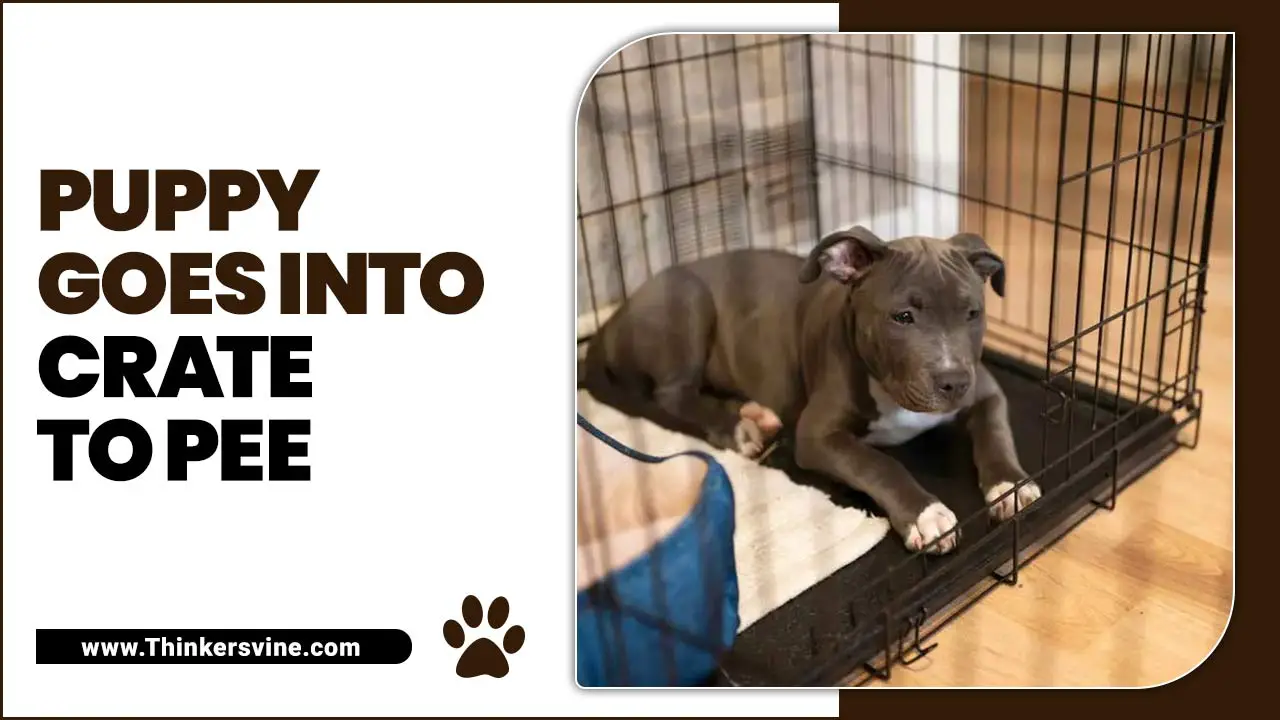
Why Your Puppy Goes Into Crate To Pee? – 5 Possible Reasons
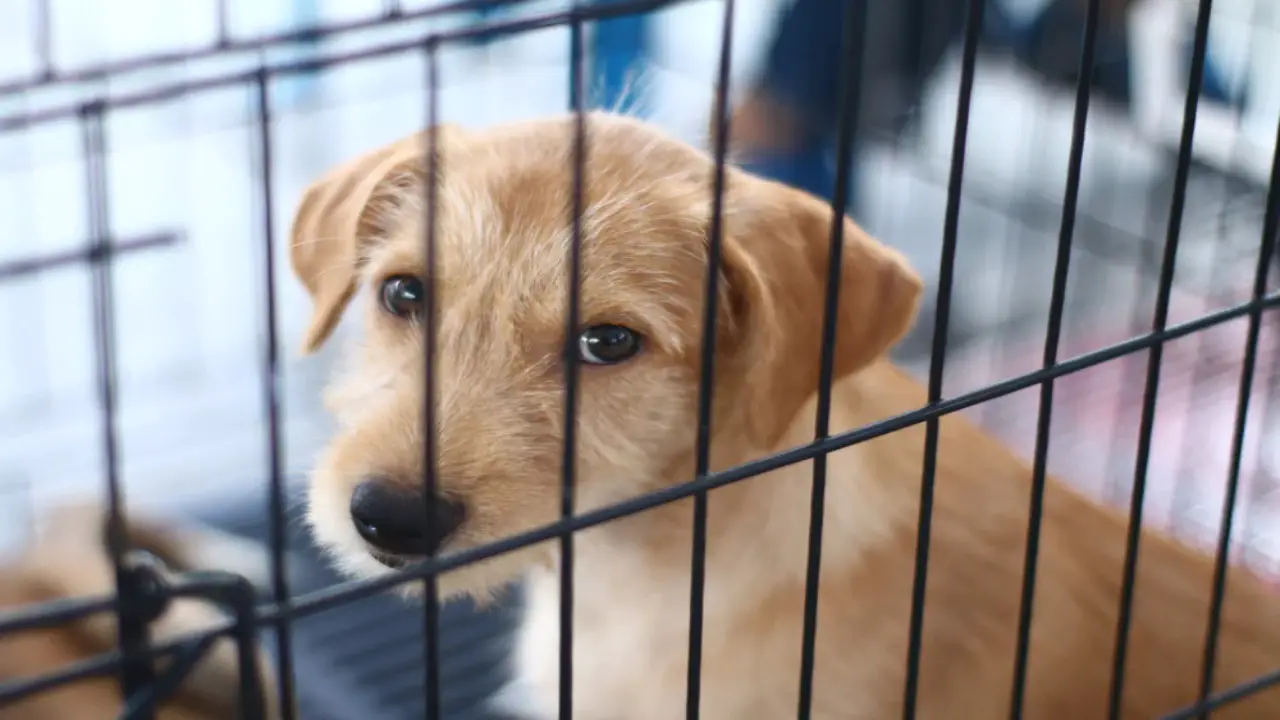
It can be frustrating and confusing when your puppy goes into their crate to pee. However, this behaviour is actually quite common in young puppies. Puppies naturally instinctually keep their sleeping area clean, and their crate becomes like a den.
When they need to relieve themselves, they may seek out the crate because they view it as a safe and clean place to do business. Additionally, puppies have small bladders and may not have the bladder control to hold them in for long periods of time. Here are 5 Reasons Why Your puppy goes into crate to pee.
1.Doesn’t Know How To Hold His Bladder
It is common for a puppy to go into their crate to pee. Especially if they are not yet fully house-trained. Puppies have small bladders and may not yet have developed the ability to hold their urine for extended periods of time. This is especially true for younger puppies still learning to control their bodily bladder function. It is important to be patient with your puppy during this stage and provide them with plenty of opportunities to go outside and relieve themselves.
2.Didn’t Get The Proper Training
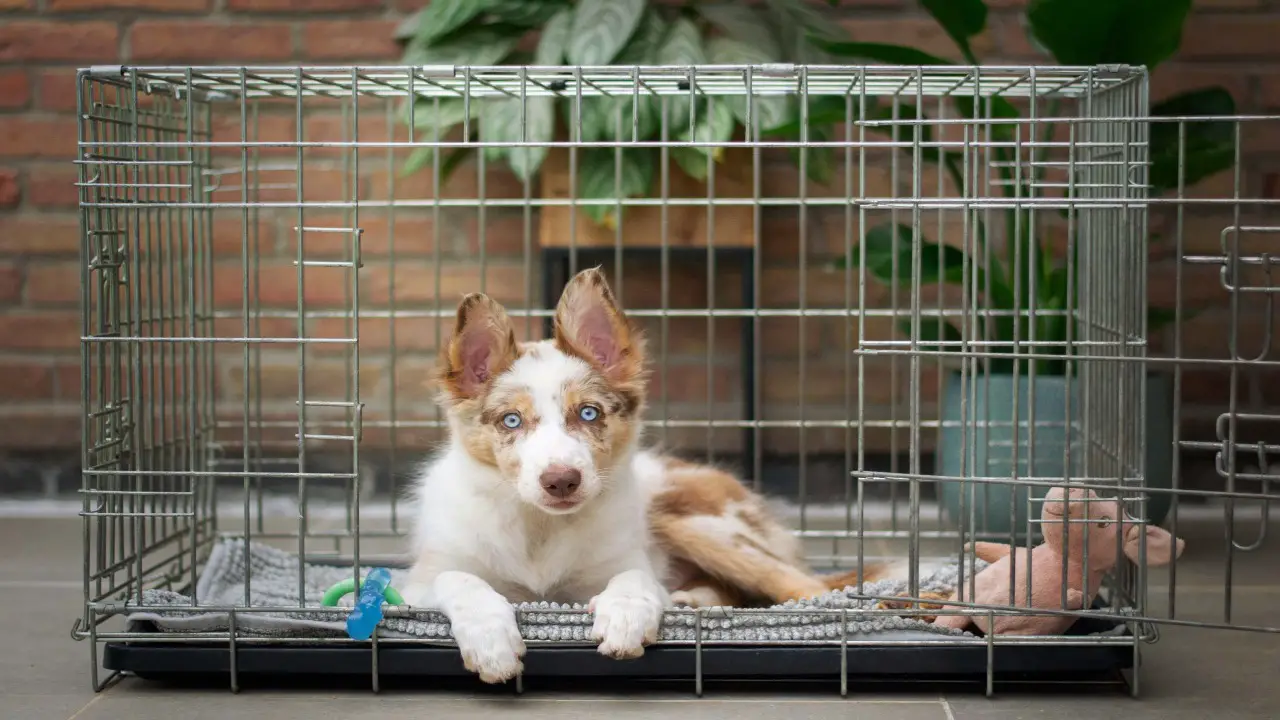
When a puppy goes into their crate to pee. It is often a sign that they did not receive proper training. Crate training is important in housebreaking a puppy and teaching them appropriate bathroom habits. When properly trained, a puppy will learn to associate their crate with a safe and comfortable space and will not eliminate it.
If your puppy consistently goes into their crate to pee. It may be necessary to reevaluate their training methods and seek guidance from a professional dog trainer or behaviourist. With patience, consistency, and the right training techniques, you can help your puppy develop appropriate bathroom habits and prevent accidents in their crate.
3.Your Puppy Is Stressed
If your puppy is going into their crate to pee, it may be a sign that they are feeling stressed. Dogs have a natural instinct to keep their living space clean. So urinating in their crate could indicate that they are experiencing anxiety or fear. This could be due to various factors such as separation anxiety, a change in routine, or a lack of proper potty training.
It’s important to address this issue promptly and provide your puppy with the support and training they need to feel comfortable and secure in their environment. Consulting with a professional dog trainer or behaviourist can help you identify the underlying cause of your puppy’s stress and develop a plan to address it effectively.
4.Crate Is Too Large
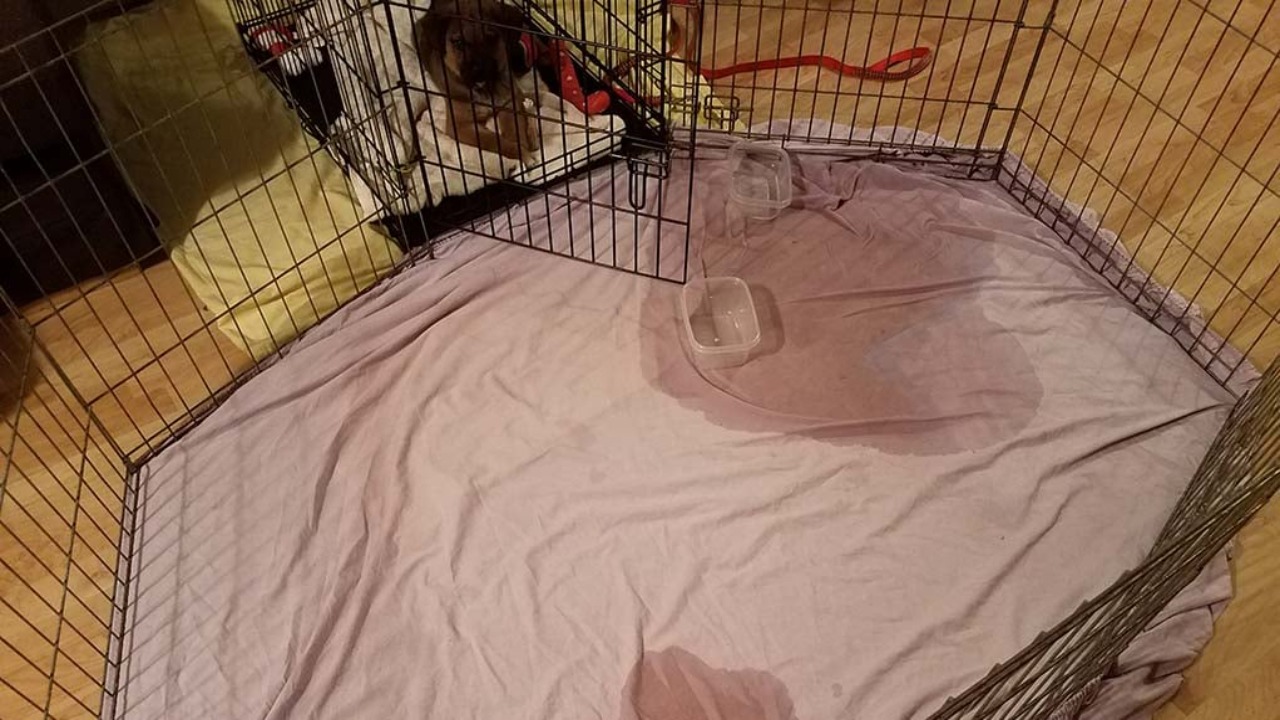
If your puppy is going into the crate to pee, it could be because the crate is too large. When a crate is too big for a puppy, they may feel like they have enough space to create a separate area for eliminating. This goes against dogs’ natural instinct to keep their sleeping area clean. Ensuring that the crate is an appropriate size for your puppy is important to prevent this behaviour.
The crate should be big enough for them to stand up, turn around, and lie comfortably. If the crate is too large, you can use dividers or blankets to create a smaller space until your puppy is fully house-trained.
5.There Might Be Some Medical Issues
If your puppy consistently goes into their crate to pee, it could be a sign of a medical issue. While some puppies may have crate accidents due to incomplete house training, if this behavior continues even after being properly trained, it could indicate an underlying problem.
Medical issues such as urinary tract infections. Bladder stones can cause puppies to have frequent urination or difficulty holding their bladder. If you notice this behavior in your puppy. It is important to consult a veterinarian to rule out potential health concerns and ensure your furry friend receives the appropriate treatment.
How To Stop Your Puppy From Going Into Crate To Pee?
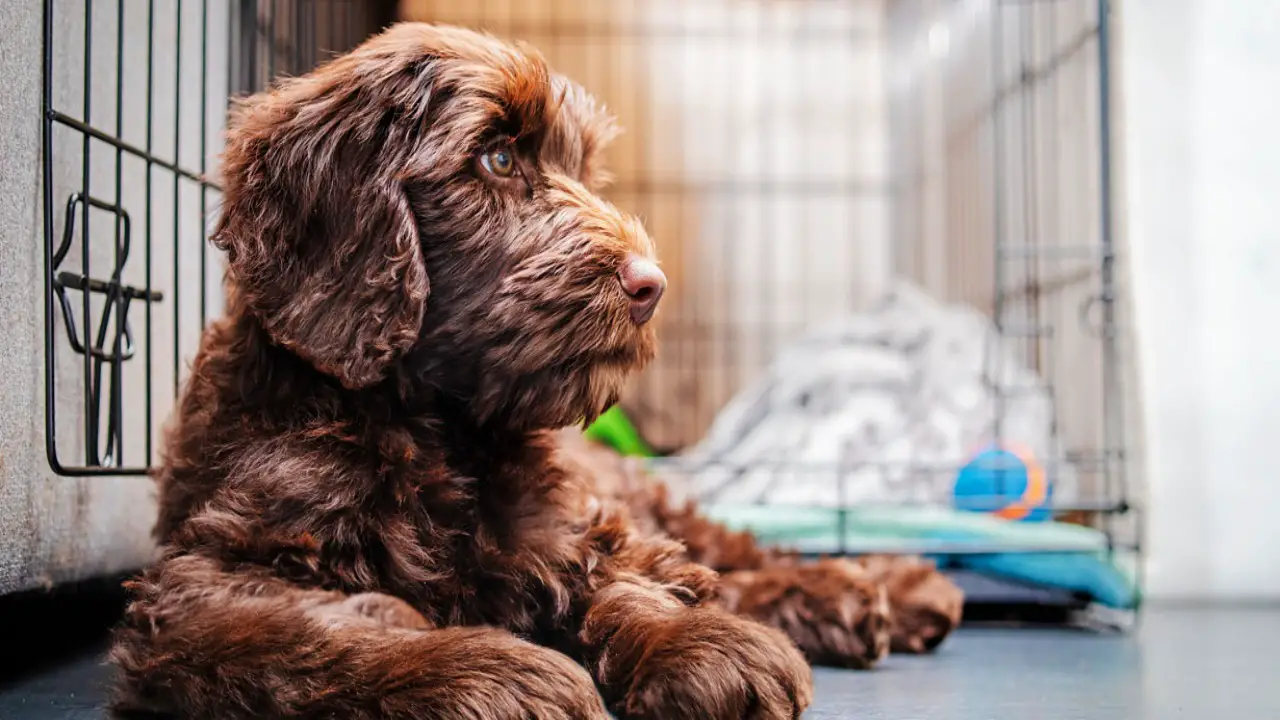
As you know why your puppy goes into the crate to pee, it’s time to end this. Your puppy has developed the habit of going into their crate to pee; it can be frustrating and inconvenient. However, you can stop this behaviour and encourage proper potty training. Let’s explore how you can stop your puppy from going into the crate to pee.
1.Fix A Schedule
To stop your puppy from going into the crate to pee. It’s important to establish a consistent schedule for bathroom breaks. Puppies have small bladders and need frequent opportunities to relieve themselves. You can prevent accidents in the crate by setting a regular schedule for potty breaks.
Take your puppy outside to their designated potty area first thing in the morning and immediately after meals, naps, or playtime. Be patient and give them plenty of time to do their business. When they successfully go outside, reward them with praise or a treat to reinforce the desired behaviour. Additionally, closely monitor your puppy inside the house and take them out if you notice any signs they need to go.
2.Make Him Empty His Bladder Before He Goes Into The Crate
One simple step to prevent your puppy from going into the crate to pee is to make sure they empty their bladder before going into the crate. Take your puppy outside for regular potty breaks and give them plenty of opportunities to relieve themselves before placing them in the crate.
This will help prevent accidents inside the crate and reinforce the idea that the crate is a clean and comfortable space. Additionally, consider using positive reinforcement techniques such as treats or praise when your puppy goes to the bathroom outside the crate. You can help your puppy break this habit and establish proper potty training behaviours consistently and patiently.
3.Don’t Give Him Water Before Bedtime
One important factor to consider is water intake before bedtime. Avoid giving your puppy access to water for at least two hours before bedtime to reduce the likelihood of them needing to pee during the night. Additionally, ensure you provide frequent bathroom breaks throughout the day and reinforce positive behaviours when they go outside.
Consistency and patience are key when training a puppy, so stick with a routine and reward them for using the appropriate bathroom area. With time and proper training, you can help your puppy learn to associate their crate with rest rather than relieving themselves.
4.Take Him Outside Regularly
Puppies, as you may know, can retain their bladders when they’re a month old. However, you should let your puppy go out more often after that. Taking him out once each hour during the day will assist him in understanding where it’s right to go pee. When it’s time for bed, it’ll also assist in keeping his bladder empty. You may gradually increase the duration between toilet sessions to determine your puppy’s “potty threshold.”
5.Help Him Reduce His Stress By Crate Training Him
Crate training can help reduce their stress and teach them appropriate bathroom habits. Start by ensuring the crate is a comfortable and inviting space for your puppy. Use positive reinforcement techniques, such as treats and praise, to encourage them to enter the crate willingly.
Gradually increase their time in the crate, letting them out for regular bathroom breaks. Consistency and patience are key when crate training your puppy. By providing them with a safe and secure space, you can help them develop good bathroom habits and reduce the urge to pee in their crate.
6.Don’t Keep Him In A Crate That’s Too Big For Him
Dogs naturally want to keep their sleeping area clean, so they may use one corner as a designated bathroom area if the crate is too large. To stop your puppy from going into the crate to pee, consider getting a smaller crate or using a divider to create a smaller space. This will help encourage your puppy to hold their bladder and only go outside.
Additionally, ensure you take your puppy outside frequently and reward them for going potty in the appropriate spot. With consistency and proper crate sizing, you can help train your puppy to stop going into the crate to pee.
7.Clean The Crate Properly If He Pees In There
When your puppy consistently goes into their crate to pee, it’s important to address this immediately. One of the first steps is to thoroughly clean the crate if your puppy has had an accident there. This will help remove any lingering scent that may attract them to continue using the crate as a bathroom. Use a pet-friendly cleaner and scrub all surfaces of the crate.
Additionally, consider using a crate divider to make the space smaller, as service dog puppies are less likely to eliminate where they sleep. Establishing a consistent bathroom routine for your puppy is essential, taking them outside frequently and rewarding them for going potty in the appropriate place.
8.When He Pees Outside, Praise Him
Positive reinforcement is key when stopping your puppy from going into the crate to pee. One effective method is to praise your puppy when he pees outside. You reinforce the desired behaviour every time your puppy successfully goes potty outside by providing positive reinforcement and rewards, such as treats or verbal praise.
This will help your puppy understand that going outside is the appropriate place to eliminate, rather than inside the crate. Consistency is important in this training process, so reward and praise your puppy each time he pees outside to reinforce the desired behavior.
9.Never Scold Him For Peeing In The Crate
Scolding can create a negative, positive association with the crate and make your puppy fear or resist going inside. Instead, focus on positive reinforcement and consistency. Take your puppy outside frequently to give them ample opportunities to relieve themselves in an appropriate area.
When they do eliminate outside, reward them with praise and treats. Gradually increase your puppy’s time in the crate, providing plenty of bathroom breaks. With patience and consistent training, you can teach your puppy to associate the crate with comfort and not as a place to pee.
10.Consult A Vet
When your puppy consistently goes into their crate pad to pee, it is important to consult a veterinarian for guidance. This behaviour may indicate a medical issue such as a urinary tract infection or bladder problem.
A vet can thoroughly examine and provide proper diagnosis and treatment options. They can also advise on proper crate training techniques to help prevent this behaviour. It is always best to seek professional advice when dealing with any concerning behaviours or health behavioral issues in your puppy.
Housetraining Puppies & Dogs
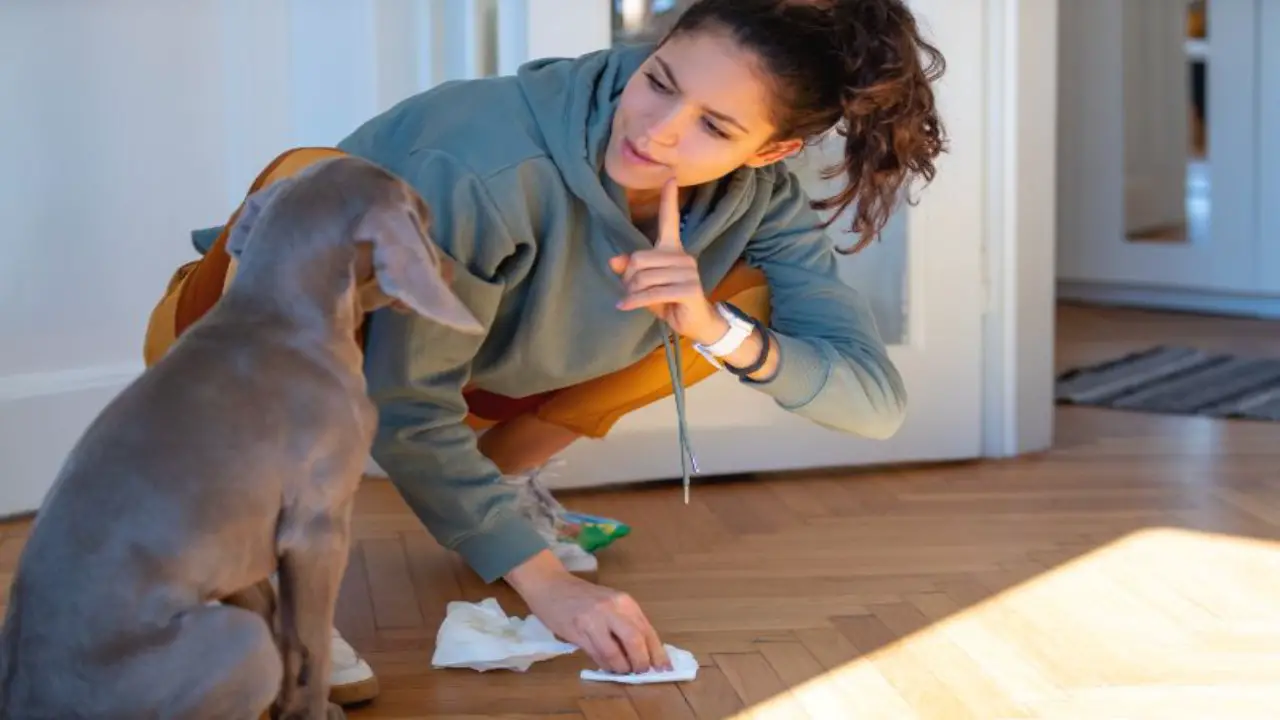
There are several important steps to follow regarding housetraining thumb for puppies and dogs. Following these housetraining tips, you can set your puppy up for success and create a harmonious living environment for both of you. Here is a list of housetraining tips to help you teach your furry friend proper bathroom etiquette:
- Establish A Routine: Dogs thrive on routine, so it’s important to establish a consistent schedule for feeding, playtime, and bathroom breaks.
- Take Them Outside Frequently: Puppies have small bladder capacity and must go outside often. Take them out every few hours maximum after meals, naps, and play sessions.
- Choose A Designated Bathroom Area: Select a specific spot in your yard where your puppy wants to do their business. This will help them associate that area with going to the bathroom.
- Use Positive Reinforcement: When your puppy goes potty outside, praise them enthusiastically and give them a treat. Positive reinforcement will help reinforce the desired behavior.
- Supervise Closely Indoors: Keep a close eye on your puppy when they are inside the house. If you see any signs they need to go, such as sniffing or circling, bring them outside immediately.
- Clean Accidents Properly: If accidents happen indoors (which they likely will during the training process), clean up the mess thoroughly using an enzymatic cleaner to remove any lingering scent.
- Be Patient And Consistent: basics of house training takes time and patience. Stay consistent with your routine and training methods, and eventually, your puppy will learn where they should go potty.
Dog Potty Pad Training Mistakes To Avoid
In terms of potty pad training for dogs, there are some common mistakes that pet owners should avoid. Avoiding these common mistakes, you can set your puppy up for success with potty pad training and help them develop good bathroom habits. Here are a few:
- Inconsistency: Consistency is key when potty pad toilet training your puppy. Make sure to establish a routine and stick to it. This includes taking your puppy to the potty pad regularly throughout the day.
- Using The Wrong Type Of Potty Pad: Not all potty pads are created equal. Make sure to choose a high-quality training behavior with an absorbent and leak-proof treats pad. This will help prevent accidents and make cleaning up easier.
- Placing The Potty Pad In The Wrong Location: It’s important to place it in an easily accessible area for your puppy. Avoid placing it near their bed or food/water bowls, as dogs naturally have an instinct to keep their living area clean.
- Punishing Accidents: Accidents happen, especially during the early stages of potty training. It’s important not to punish your puppy for accidents, as this can create fear and anxiety in dog training around using the potty pad.
- Not Rewarding Success: When your puppy successfully uses the potty pad, be sure to praise and reward them with treats or verbal praise. This positive reinforcement will help reinforce good behavior and encourage them to continue using the potty schedule pad.
How To Stop Your Dog From Peeing In Their Crate
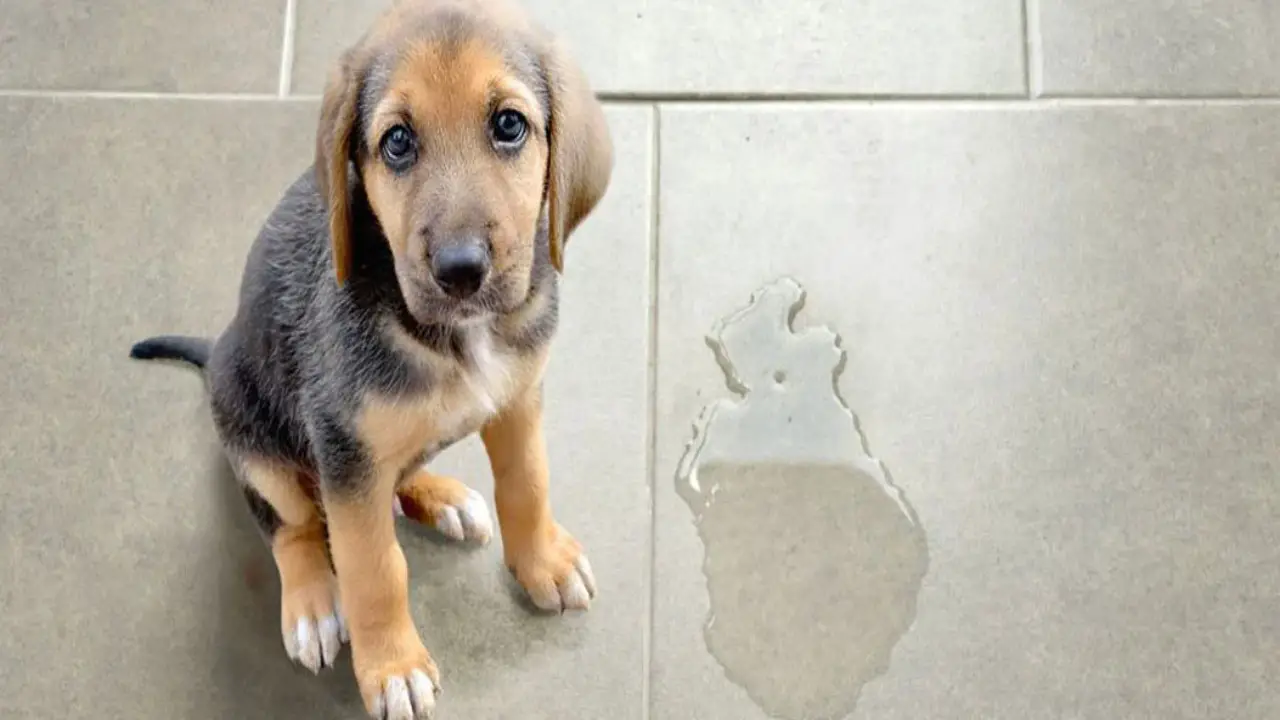
If your dog consistently pees in their crate, it can be frustrating and difficult to manage. However, there are steps you can take to address this issue and help your dog learn appropriate bathroom behaviors. Here are some tips to stop your dog from peeing in their crate:
1.Use A Pee Pad
Using a pee pad is a great first step in preventing accidents in your dog’s crate. Place the pad in a corner of the crate where your furry friend typically eliminates. This will create a designated area for them to relieve themselves, reducing the chances of accidents elsewhere in the crate. Be sure to change the pad regularly to maintain cleanliness.
2.Exercise Your Dog
Regular exercise is essential for a happy and healthy dog. By ensuring that your furry friend gets enough physical activity, you can help reduce their need to relieve themselves in their crate. Take them for walks, play fetch, or engage in other forms of active play to burn off excess energy.
3.Set A Strict Daily Routine
Setting a strict daily routine is crucial in preventing your dog from peeing in their crate. Feed them at the same times every day, take them outside for bathroom breaks regularly, and keep their crate clean to establish a consistent schedule.
4.Visit A Vet
If your dog continues to pee in their crate despite your efforts, visiting a veterinarian is essential. They can rule of thumb out any underlying medical conditions that may be causing this behavior. Urinary tract bladder infection or other health issues could contribute to frequent urination.
Conclusion
Dealing with a puppy goes into crate to pee can be frustrating and challenging. It’s important to understand that this behavior is not uncommon, especially for young puppies who are still learning proper potty-training puppies. Instead of getting discouraged, it’s essential to approach the situation with patience and consistency. Start by ensuring your puppy has regular bathroom breaks outside the crate and establish a consistent schedule.
Additionally, consider using positive reinforcement techniques, such as treats and praise, to reward your puppy for going potty in the appropriate place. With time and consistent journey dog training, your puppy will learn to associate the crate with relaxation rather than a bathroom area.
FAQs
1.Why Is My Puppy Going To The Bathroom In Her Crate?
Ans: Having your puppy go to the bathroom in her crate can be frustrating and puzzling. There are a few potential reasons for this behavior. Ensure you provide ample opportunities for your puppy to relieve herself outside her crate. Puppies have small bladders and need frequent trips to the potty area.
2.Why Does My Puppy Keep Coming Inside To Pee?
Ans: It’s possible that your puppy is not fully house-trained yet. Puppies have limited bladder control and may not understand that they must go outside to relieve themselves. It’s important to be patient and consistent with their training. Ensure you’re taking them outside regularly and rewarding them for going potty in the right place.
3.How Do I Get My Puppy To Stop Peeing In His Crate?
Ans: Training a puppy to stop peeing in their crate can be frustrating, but with patience and consistency, it is achievable. Start by ensuring that the crate is appropriate for your puppy and that they have ample opportunities to relieve themselves outside the crate. Establish a consistent routine for bathroom breaks and reward your puppy for going potty in the appropriate place.
4.Why Is My 5-Month-Old Puppy Still Peeing In The House?
Ans: It’s not uncommon for a 5-month-old puppy to still have accidents in the house. At this age, they are still learning and developing bladder control. It’s important to continue with consistent potty training and provide plenty of opportunities for them to go outside. Supervision is key during this stage, as you can catch them in the act and redirect them outside.
5.How Long Should A Puppy Be In A Crate?
Ans: The time a puppy should be in a crate depends on several factors, including age, bladder control, and individual needs. As a general guideline, a 2-3-month-old puppy can typically be created for about 1-3 hours at a time, while a 4-6-month old puppy can handle around 3-4 hours.
